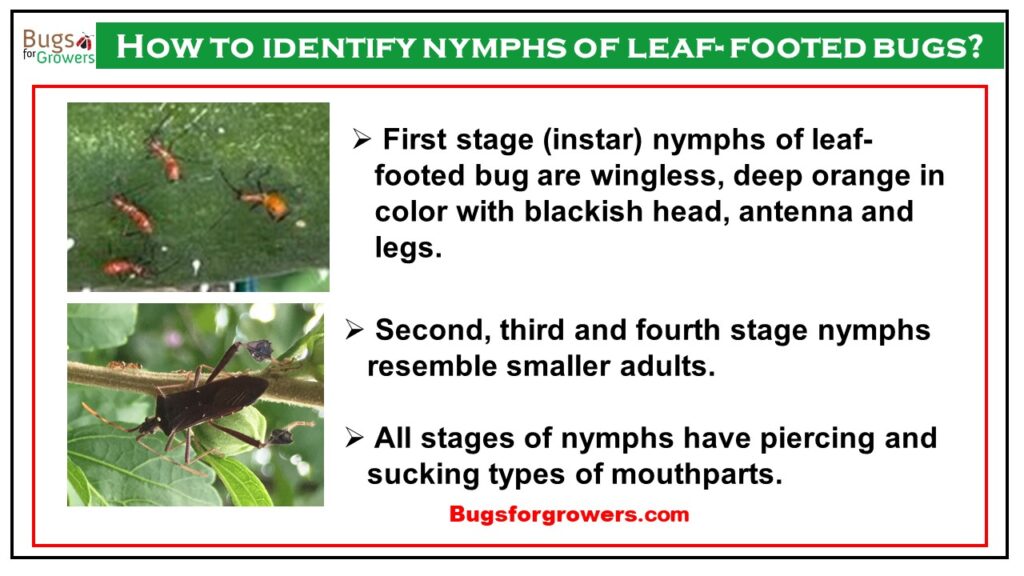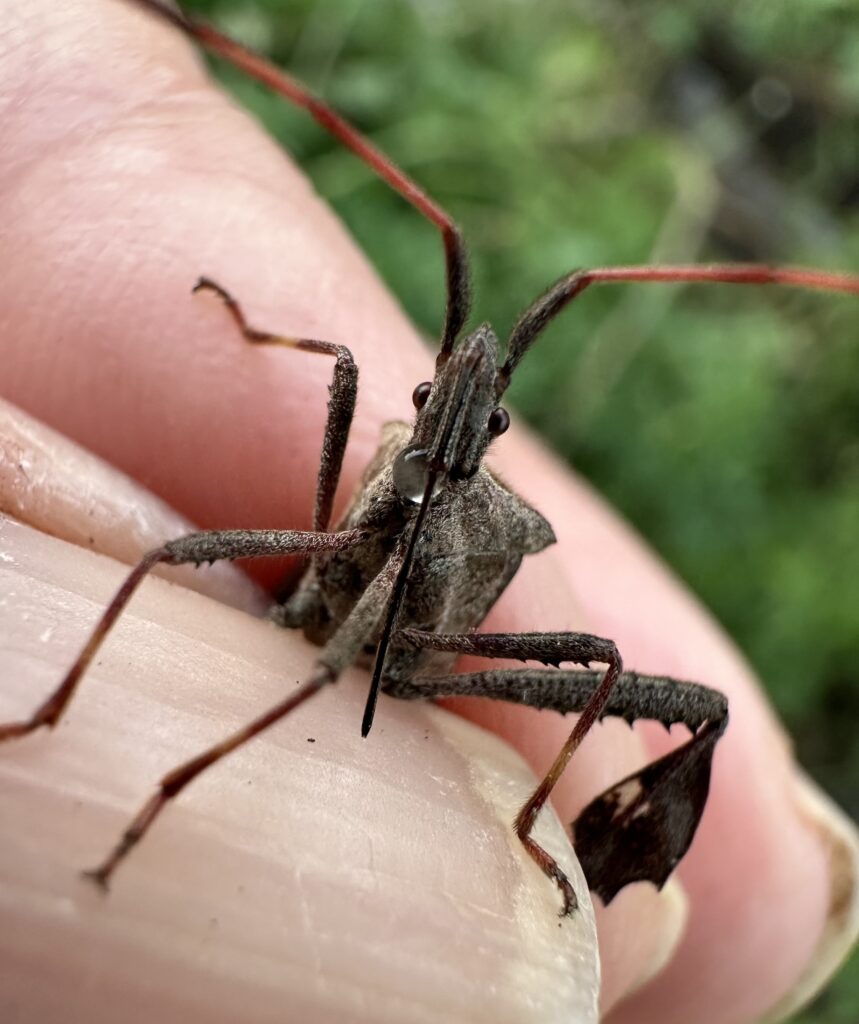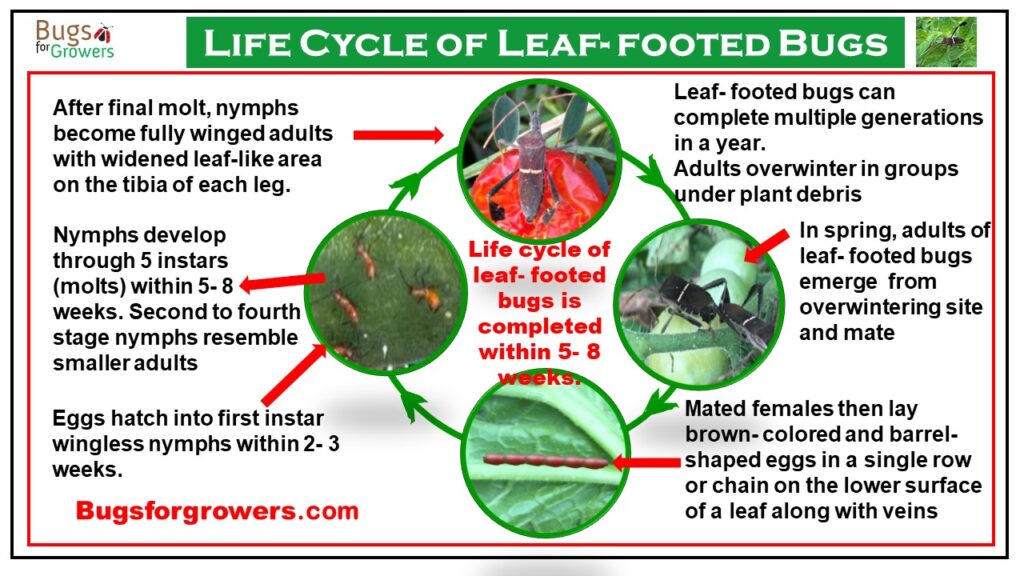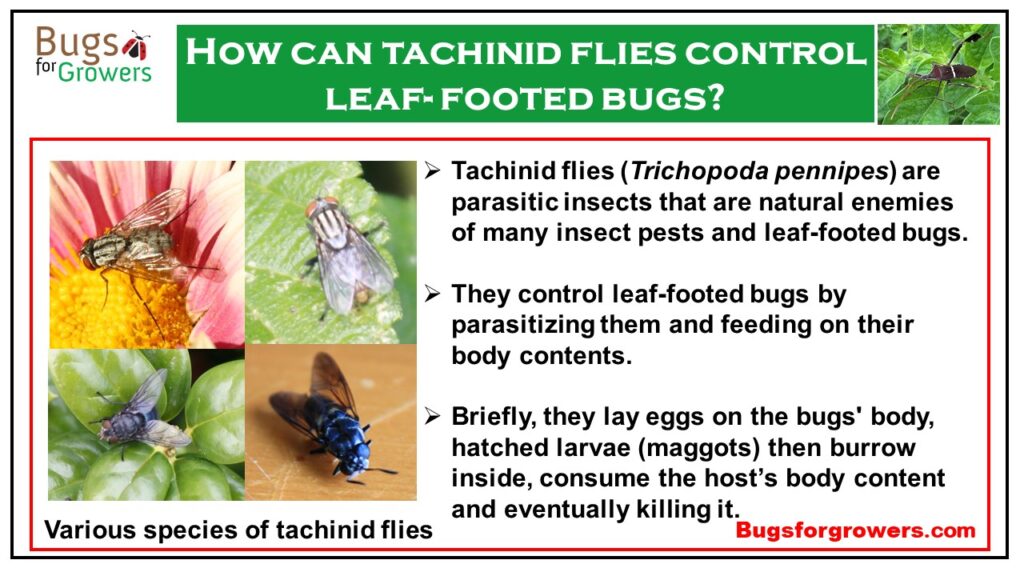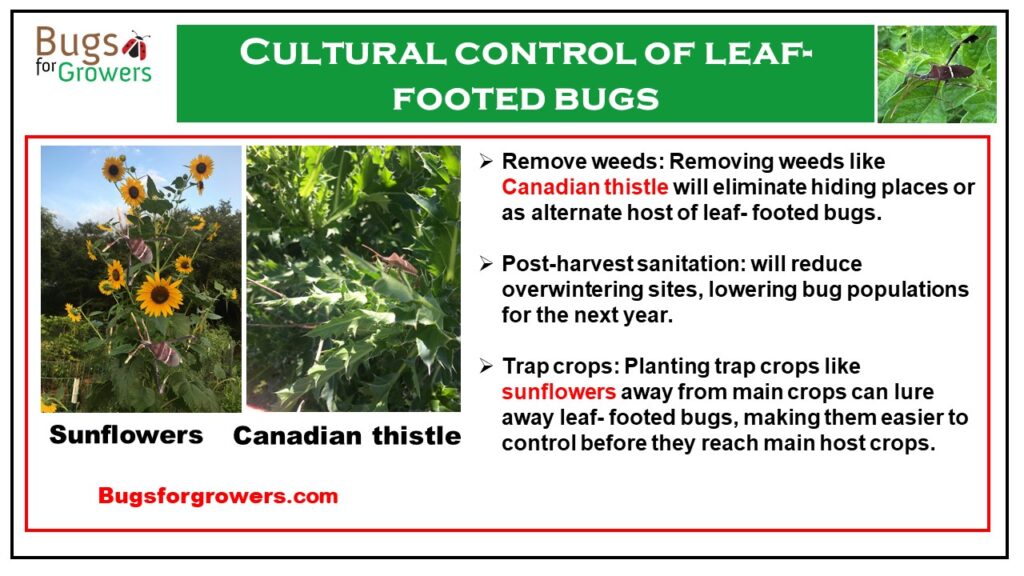YouTube Video on Natural Control of Leaf-footed Bugs
Introduction
In this blog, we’re exploring the fascinating world of leaf-footed bugs (Leptoglossus zonatus) and understanding the damage they can cause across a wide range of crops, including vegetables, fruits, and even ornamental plants. This guide will also cover practical strategies for controlling these pests, from utilizing natural predators and parasitoids to cultural and mechanical control techniques. Let’s dive in!
What are Leaf- footed Bugs?
Adults
Leaf-footed bugs are named for the leaf-like expansions on their hind legs, giving them a distinctive look. Adults are typically 7-9 millimeters long, brown or black in color, and sport a unique white stripe across their backs.
Nymphs:
Nymphs, or young bugs, are wingless and bright orange, with striking black legs and antennae.
Eggs
Eggs are golden-brown in color and barrel- shaped
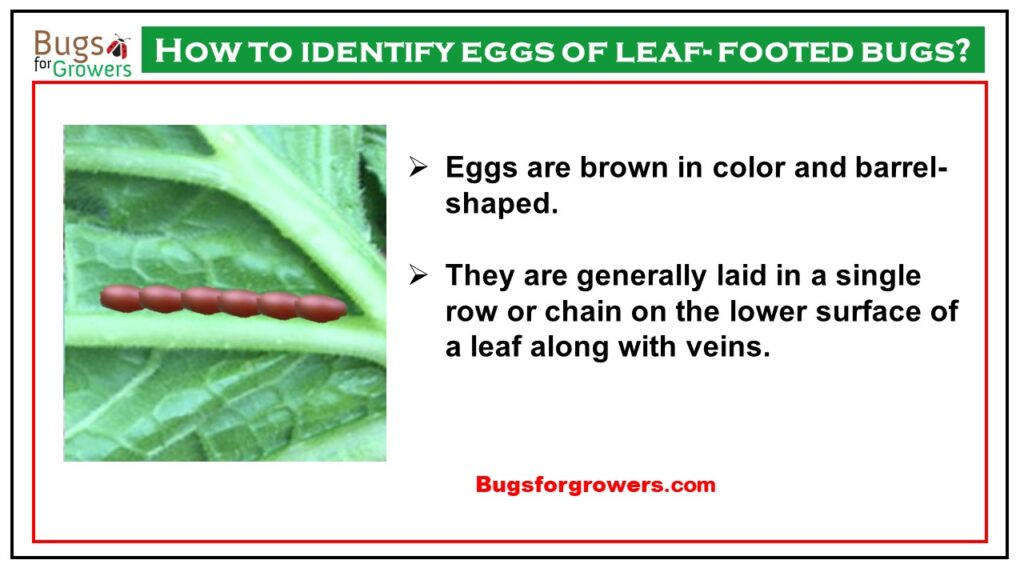
Both the adults and nymphs have specialized piercing and sucking types of mouthparts, also known as stylets.
Life Cycle
After mating, female leaf-footed bugs lay clusters of golden-brown, barrel-shaped eggs in neat rows on the underside of leaves or along plant stems and leaf veins. Within 2 to 3 weeks, eggs hatch into tiny nymphs. As the nymphs mature, they pass through five distinct growth stages, gradually developing those signature leaf-like legs. In just 5 to 8 weeks, they complete their life cycle, emerging as fully winged adults capable of living for several months. In warmer climates, they can even reproduce multiple times per year. During the colder months, leaf-footed bugs generally overwinter as adults under plant debris.
Damage Caused by Leaf- footed Bugs
Damage Caused by Leaf-Footed Bugs Leaf-footed bugs can inflict significant damage on a variety of crops, primarily through their feeding habits:
Fruit Damage: These bugs often pierce fruits like figs, tomatoes, pomegranates, peaches, and citrus to suck out the juices, which can lead to discolored spots or sunken areas. This type of damage often renders the fruit unmarketable.
Vegetable Damage: On crops like okra, cucumbers, tomatoes and beans, leaf-footed bugs may suck the cell sap from fruits and pods, causing deformities, discoloration, or even premature fruit and pod drop.
Damage to Leaves and Stems: Their feeding habits can also harm plant leaves and stems, leading to stunted growth, wilting, and weakened plants, especially young plants or seedlings.
Seed Damage: Leaf-footed bugs may feed on developing seeds, leading to reduced crop yields, particularly in bean plants.
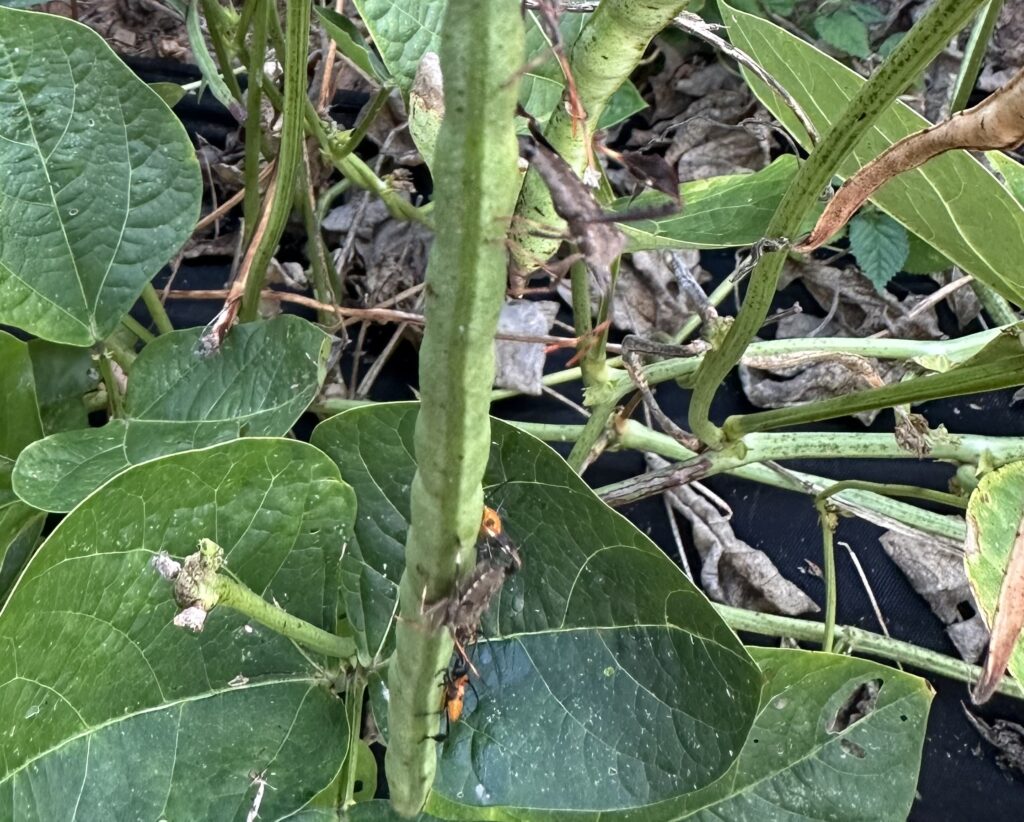
Effective Control Strategies
Managing leaf-footed bugs requires a combination of natural, cultural, and mechanical control methods to keep populations in check and prevent severe damage. Here are some effective strategies:
Natural Control Options
Natural Predators: Birds, assassin bugs, wasps, spiders, and yellow jackets are all natural predators that feed on leaf-footed bugs, helping to reduce their numbers. Assassin bugs, in particular, are commercially available for use as biological control agents, targeting leaf-footed bugs by injecting venom and feeding on their internal contents.
Parasitoids: Tachinid flies and egg-parasitic wasps are also effective against leaf-footed bugs. Tachinid flies lay their eggs on leaf-footed bugs, and when these eggs hatch, the larvae feed on body content and kill the bugs.
Egg-parasitic wasps target the bugs’ eggs, with larvae that feed on developing nymphs before they even hatch. Thus preventing future generations of leaf- footed bugs and damage caused by them.
Cultural control methods
Weed Removal: Removing weeds that serve as alternative hosts for leaf-footed bugs helps to reduce their habitat and makes it harder for their populations to thrive.
Garden Clean-Up: Clearing crop debris and tidying up the garden during the fall can reduce overwintering sites for adult bugs, effectively lowering the population for the following year.
Trap Crops: Early planting of trap crops like sunflowers can lure leaf-footed bugs away from main crops, making it easier to control them before they reach their preferred hosts.
Mechanical Control methods
Egg Crushing: You can manually crush eggs to reduce the number of leaf-footed bugs that will emerge later in the season.
Collecting and Destroying Adults and Nymphs: Hand-picking and disposing of both adult and nymph leaf-footed bugs can be effective for smaller gardens or targeted areas.
Conclusions
Leaf-footed bugs can be a challenge for gardeners and farmers, but with a combination of natural, biological, cultural, and mechanical methods, their populations can be effectively managed. By incorporating these strategies into your pest management plan, you can protect your crops from the damage caused by leaf- footed bugs. Stay vigilant, and your garden will thrive!


